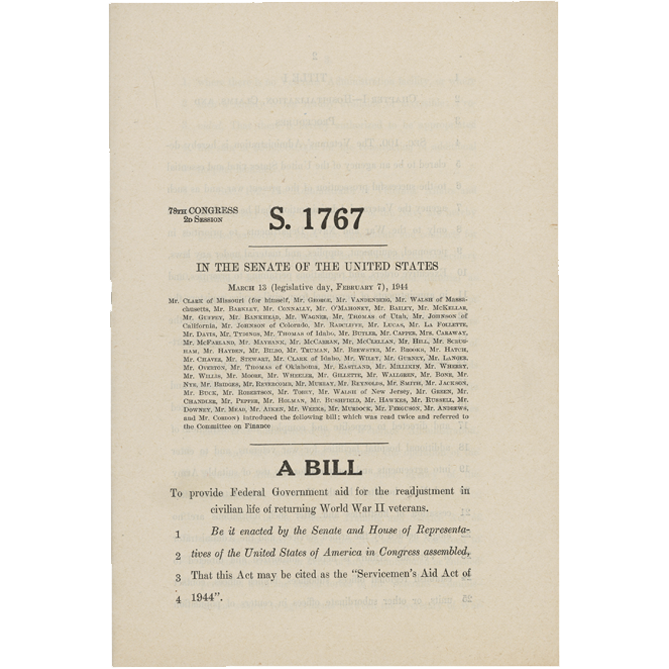Originally established to provide services and benefits to the veterans of World War II, the Servicemen’s Readjustment Act of 1944, also known as the G.I. Bill of Rights, was signed by President Franklin Delano Roosevelt on June 22, 1944, after it had passed the House and the Senate unanimously.
In addition to providing education funds for soldiers returning from the World War, it established hospitals, low cost mortgages, and low interest loans to start business, and one year of unemployment compensation for the veterans.
The act put higher education, job training, and home ownership within the reach of millions of World War II veterans. By 1951, nearly 8 million veterans had received educational and training benefits, and 2.4 million had received $13 billion in Federal loans for homes, farms, and businesses.
The G.I. Bill was later adjusted to include veterans of the Korean and Vietnam wars; it has since been expanded to all who have served in the Armed Forces.




Act of June 22, 1944 [Servicemen’s Readjustment Act [G.I. Bill of Rights]]
National Archives, General Records of the United States Government
This document was on display in the “Featured Documents” exhibit in the Rotunda Galleries of the National Archives in Washington, DC, June 6 through July 14, 2014.
This “Featured Documents” exhibit was made possible in part by the Foundation for the National Archives through the generous support of Toyota.




